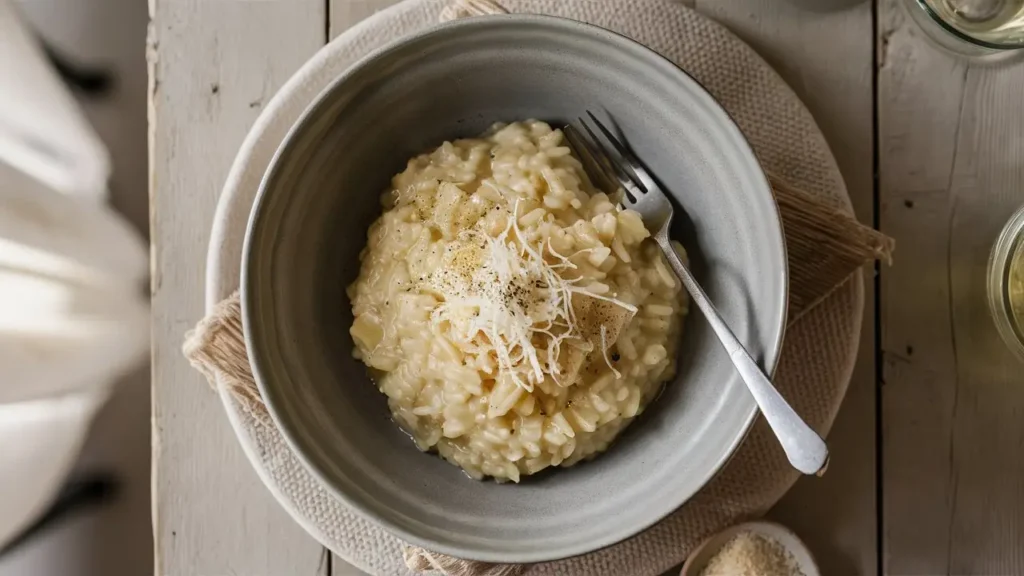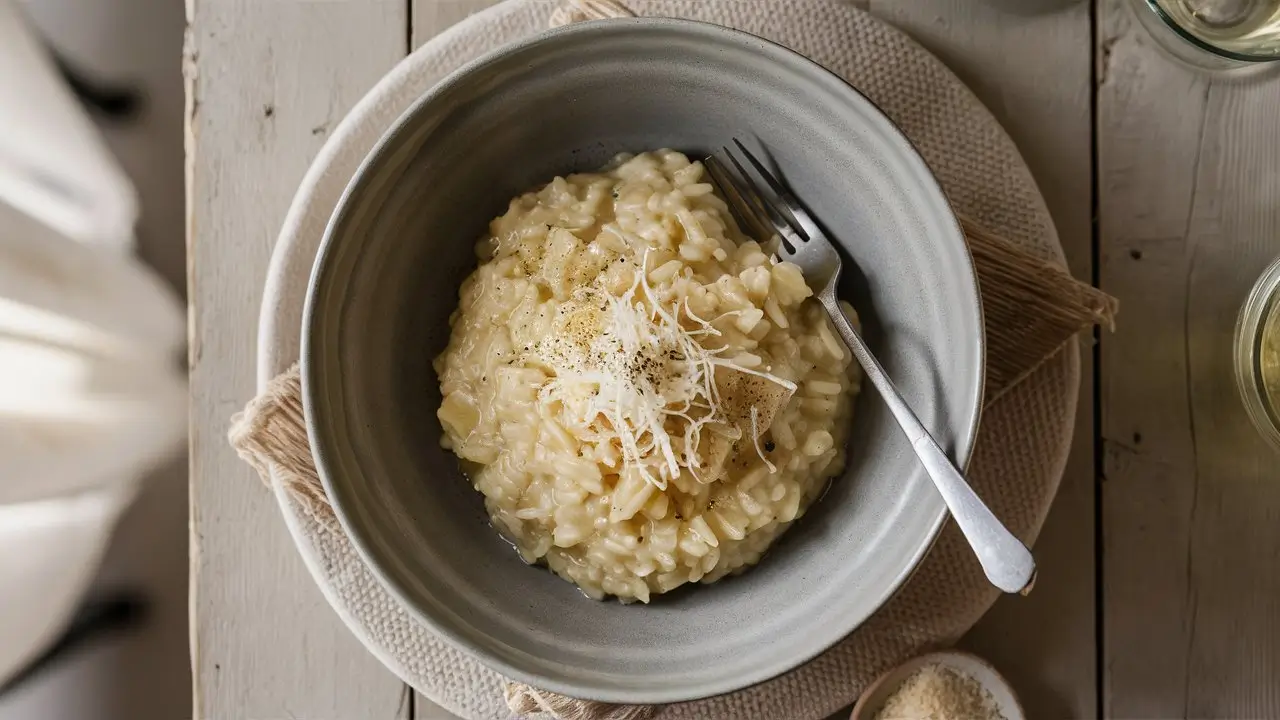Risotto is one of those dishes that feels luxurious yet is surprisingly simple when you get the hang of it. Known for its creamy texture and comforting flavors, risotto is a staple of Italian cuisine, and once you master the basic method, the possibilities are endless.
In this article, we’ll break down everything you need to know about making the perfect risotto—from choosing the right rice to troubleshooting common mistakes—so you can create a dish that’s as good as any you’d find in a restaurant.
What Is Risotto?
Risotto is a creamy Italian rice dish cooked slowly by adding broth a little at a time. The magic lies in the starch from the rice, which gives the dish its signature velvety texture. Unlike regular rice dishes, risotto is stirred constantly, creating that luscious creaminess without any cream.

Why You’ll Love Risotto
-
Comforting and rich in flavor
-
Incredibly versatile—you can add almost any ingredient
-
Elegant enough for a dinner party, but easy enough for weeknights
-
Naturally gluten-free
Ingredients List
-
1 ½ cups Arborio rice (or other risotto rice)
-
1 small onion, finely chopped
-
4 tablespoons butter (divided)
-
4 cups chicken or vegetable broth (kept warm)
-
½ cup dry white wine
-
½ cup grated Parmesan cheese
-
Salt and freshly ground black pepper to taste
Best Rice for Risotto
The rice is the star of the show, so choosing the right type is key. Look for short-grain, high-starch rice varieties like:
-
Arborio: The most common and widely available risotto rice.
-
Carnaroli: Often preferred by chefs for its superior texture.
-
Vialone Nano: Smaller grains, but very creamy.
Timing
-
Prep Time: 5 minutes
-
Cook Time: 25–30 minutes
-
Total Time: 30–35 minutes
Step-by-Step Instruction for Risotto
Step 1. Sauté the Aromatics
Start by heating 2 tablespoons of butter in a large saucepan. Add the chopped onion and cook until translucent, about 3–4 minutes.
Step 2. Toast the Rice
Stir in the Arborio rice and cook for 2–3 minutes. Toasting the rice enhances its nutty flavor and helps it hold its shape during cooking.
Step 3. Deglaze with Wine
Pour in the white wine and stir until it’s mostly absorbed. This step adds depth to the flavor.
Step 4. Add Broth Gradually
Begin adding the warm broth, one ladleful at a time. Stir frequently, allowing each addition to be mostly absorbed before adding the next.
Step 5. Finish with Butter and Parmesan
Once the rice is creamy and al dente (about 18–20 minutes), stir in the remaining butter and Parmesan cheese. Season with salt and pepper to taste.

Tips for Perfect Risotto
-
Keep the broth warm: Cold broth cools the rice and slows down cooking.
-
Stir often: This releases the rice’s starch, making the risotto creamy.
-
Taste as you go: Check the rice’s doneness—it should be tender with a slight bite.
Delicious Variations
Mushroom Risotto
Add sautéed mushrooms (like cremini, shiitake, or porcini) for an earthy, savory twist.
Lemon and Herb Risotto
Stir in lemon zest, juice, and fresh herbs like parsley or basil for a bright, fresh flavor.
Seafood Risotto
Top your risotto with sautéed shrimp or scallops for a luxurious seafood dish.
Butternut Squash Risotto
Roasted butternut squash brings sweetness and a pop of color—perfect for fall.
What to Serve with Risotto
Risotto can be a meal on its own, but it also pairs beautifully with:
-
Grilled chicken or fish
-
Roasted vegetables
-
Crisp green salads
-
Garlic bread
Storing and Reheating
-
Refrigerate: Store leftovers in an airtight container for up to 3 days.
-
Reheat: Gently reheat on the stove with a splash of broth to restore creaminess.
Can You Freeze Risotto?
While risotto is best enjoyed fresh, you can freeze it for up to 1 month. Note that the texture may change slightly upon thawing. Thaw overnight in the fridge and reheat with broth.
Nutritional Information (Per Serving)
-
Calories: 320
-
Total Fat: 12g
-
Saturated Fat: 7g
-
Cholesterol: 30mg
-
Sodium: 450mg
-
Carbohydrates: 42g
-
Protein: 9g
Nutrition may vary based on added ingredients.
Common Mistakes to Avoid
-
Overcooking the rice: Risotto should be creamy, not mushy. Aim for al dente.
-
Adding broth too quickly: Give the rice time to absorb each ladleful for maximum creaminess.
-
Skipping the toasting step: Toasting the rice at the beginning adds flavor and helps maintain texture.
FAQs
Can I make risotto without wine?
Yes! Simply skip the wine or replace it with extra broth and a splash of lemon juice for acidity.
Is risotto gluten-free?
Yes, risotto is naturally gluten-free, but always check your broth ingredients to be sure.
Can I make risotto in advance?
Risotto is best served fresh, but you can par-cook it by stopping halfway through, cooling it, and finishing it later.
Conclusion
Risotto is a timeless dish that brings comfort and elegance to the table. While it requires attention and patience, the result is always worth it. Once you’ve mastered the basic technique, you’ll be amazed at how many ways you can customize it to suit any season or craving.
